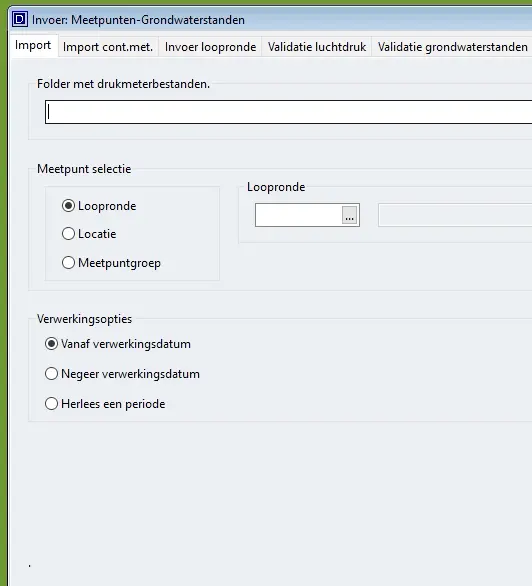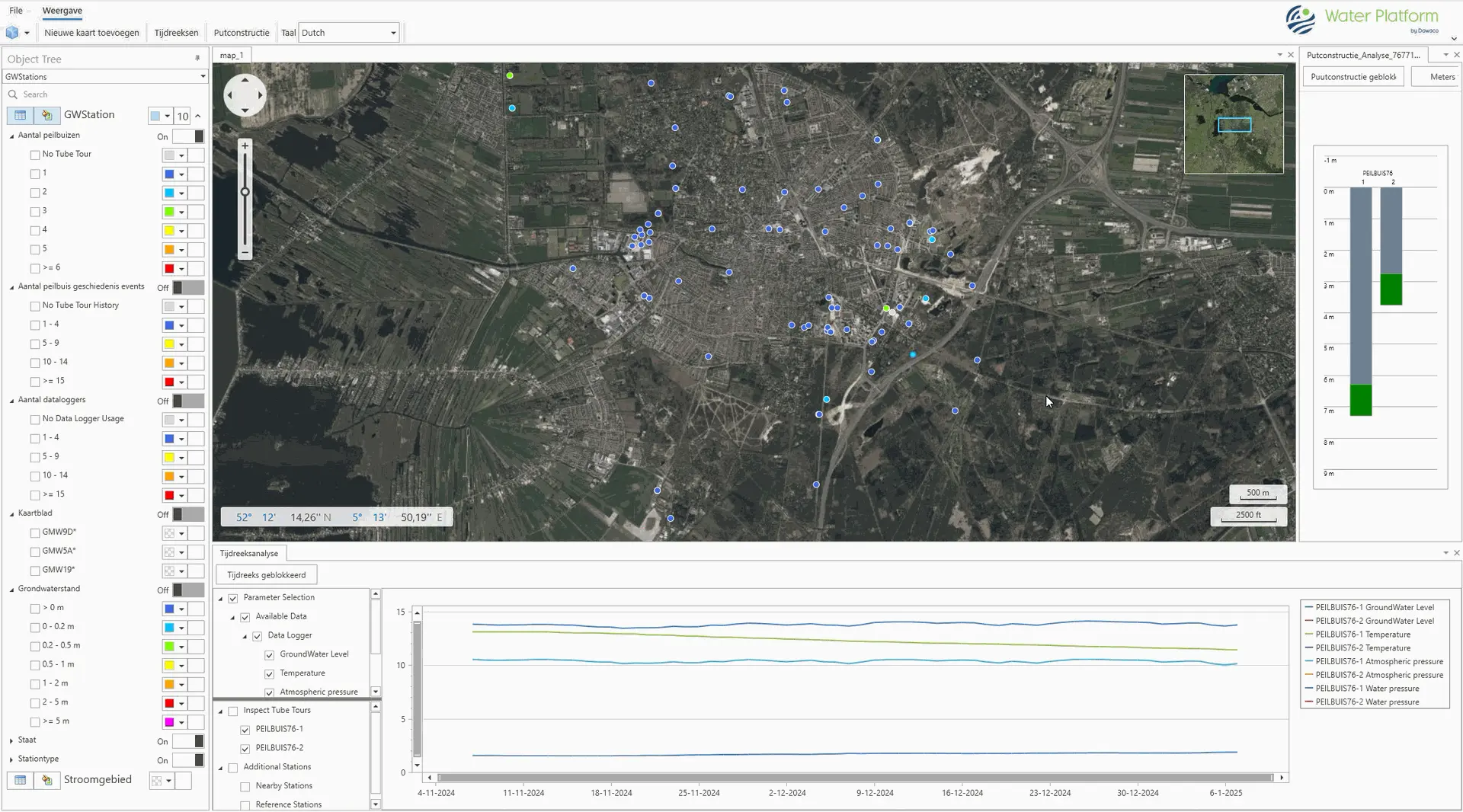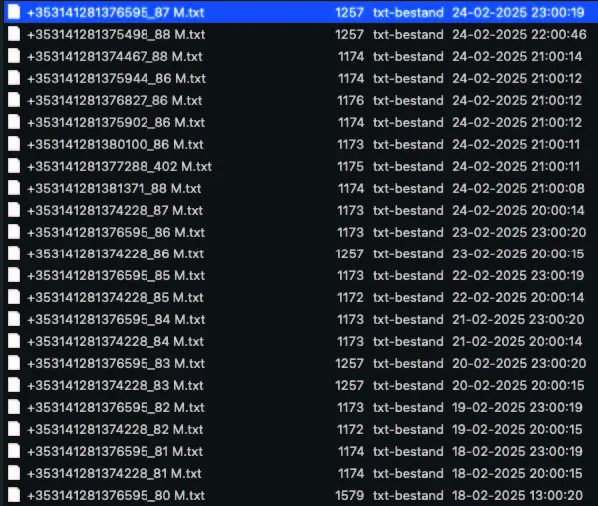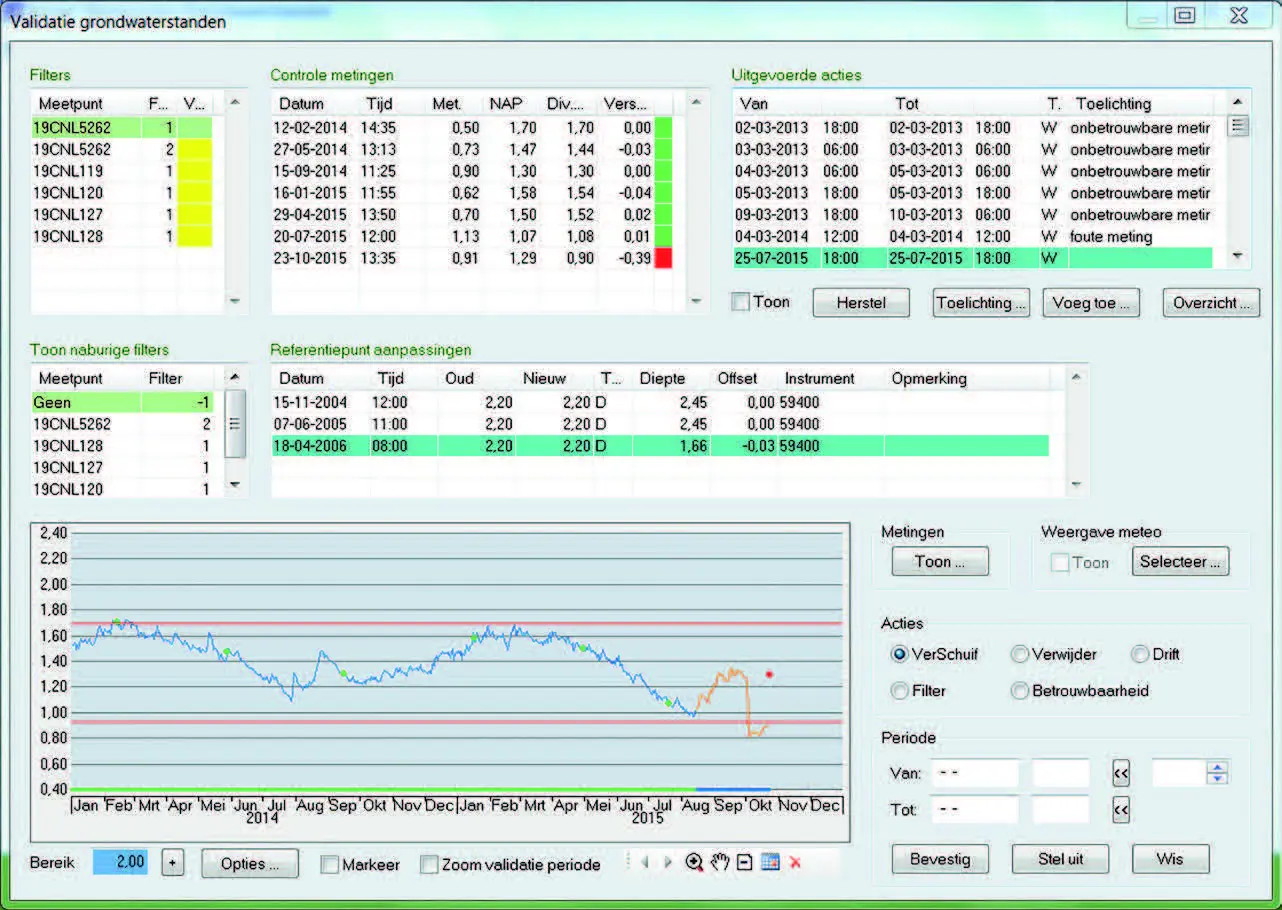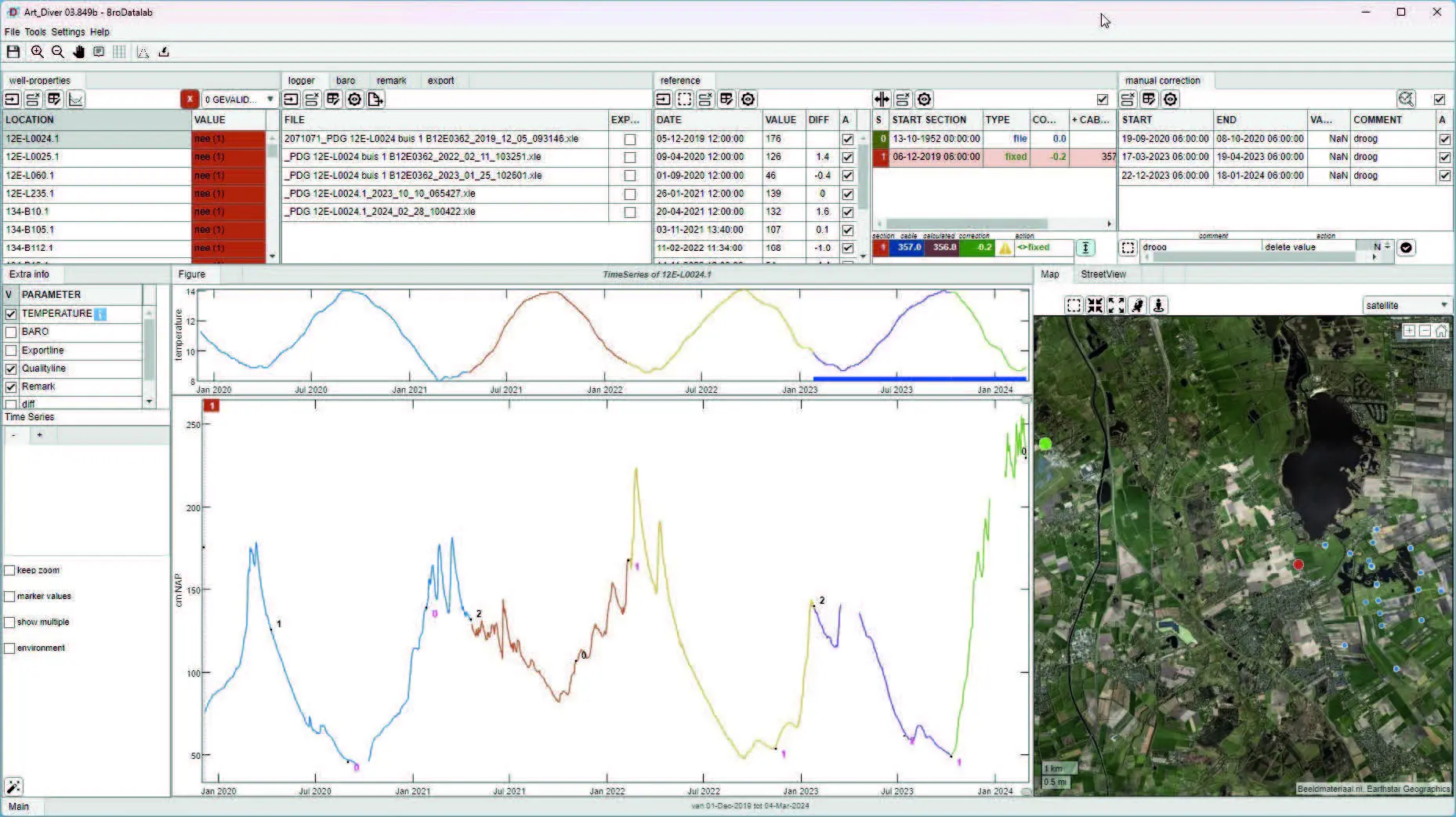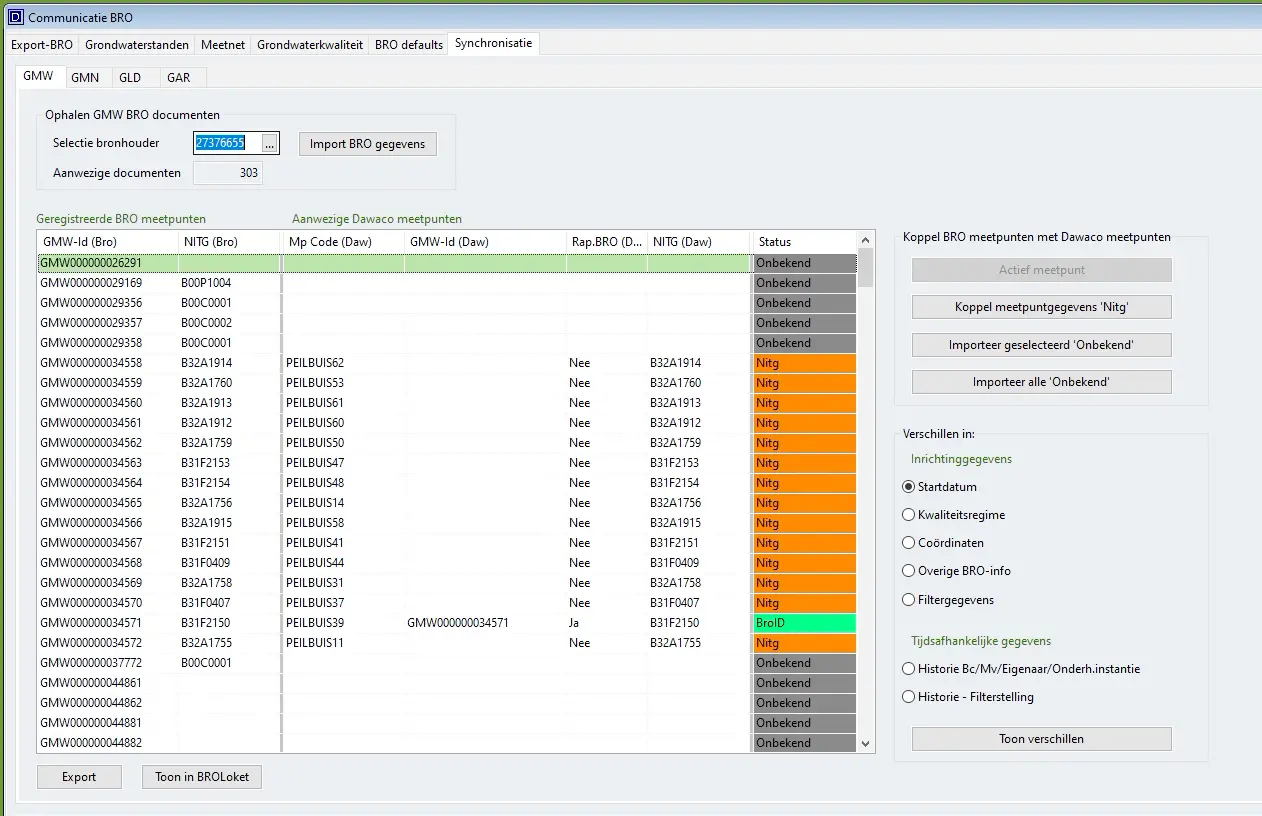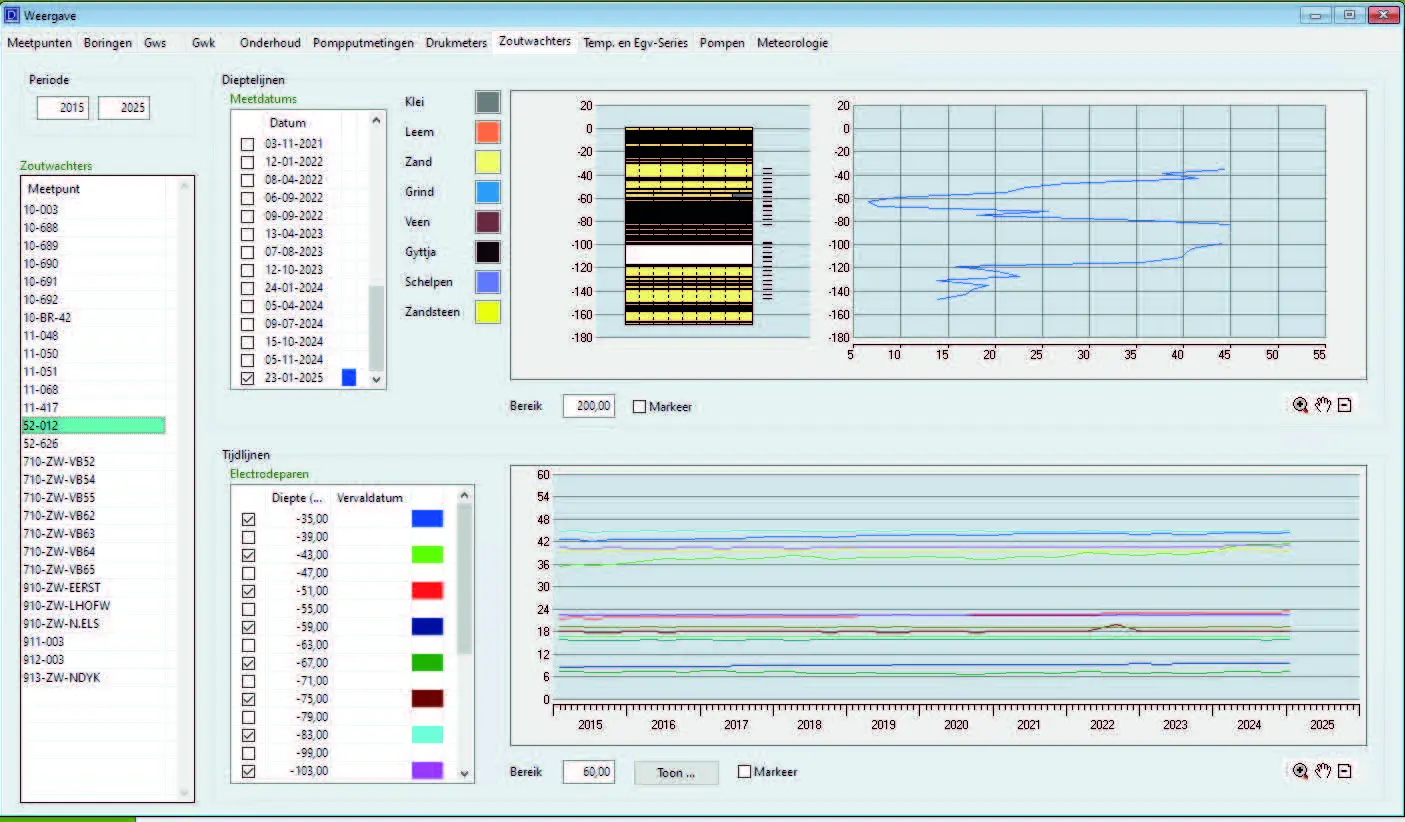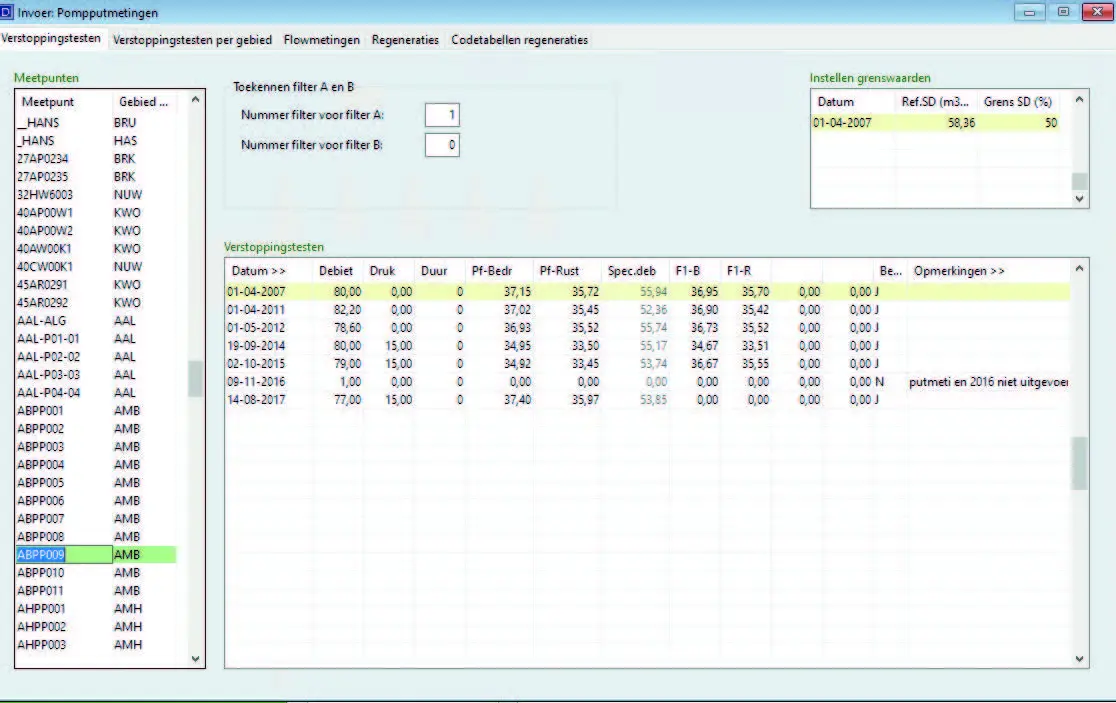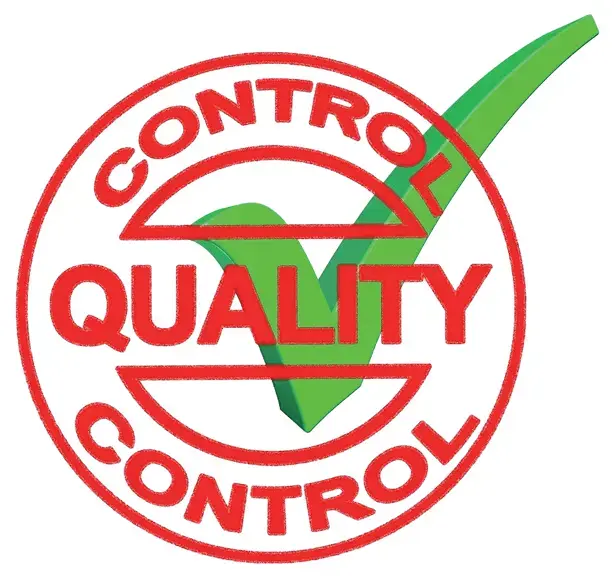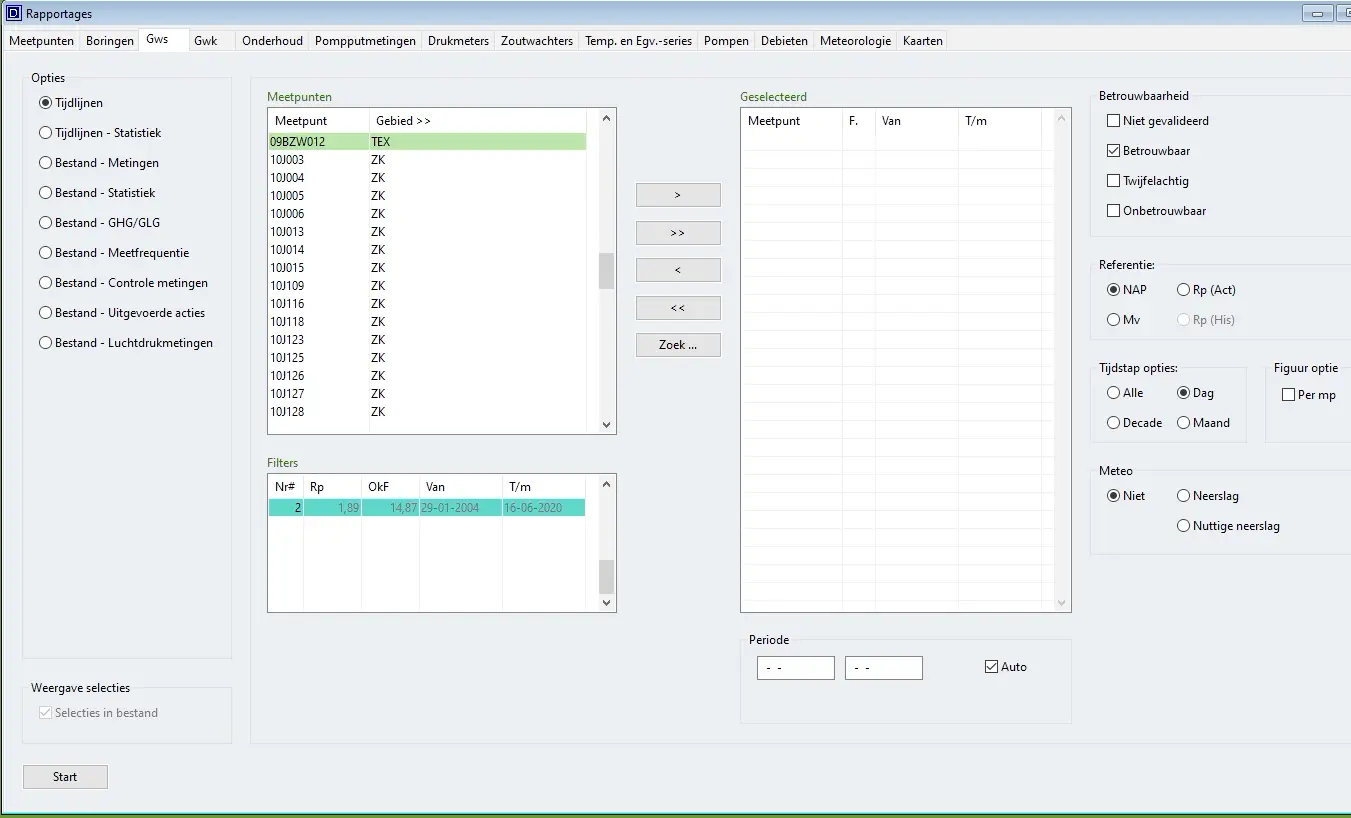The basis of Dawaco GW
The basis of the Dawaco database is the well. All properties of a well can be managed with Dawaco.
Well construction, filter arrangement, materials, drill descriptions, salt guard electrodes, maintenance, and so on.
Dawaco GW's data model is fully compatible with the BRO data model, so that well and pipe data, can be managed entirely according to the IMBRO standard and then delivered to the BRO. All BRO search lists are populated in accordance with the IMBRO standard and constrained to that standard, so that no non-BRO compatible data can be entered on BRO fields. Lists are incidentally renewed when the IMBRO standard is updated.
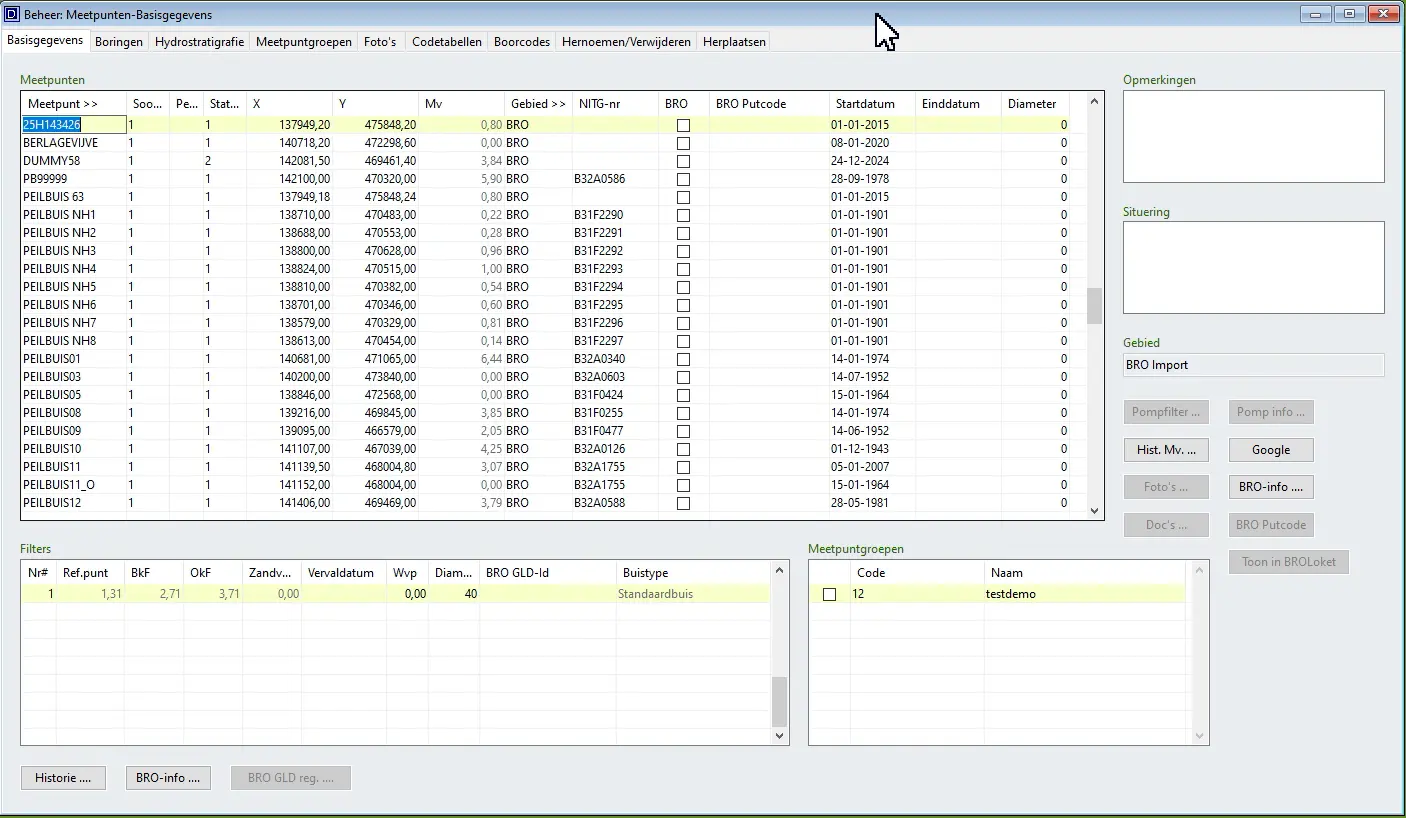
However, Dawaco GW's data model is much broader than the BRO data model, so data managers can also manage many other relevant and non-BRE mandatory data with the system. Think, for example, of OLGA codes, aquifers. Well groups are also additional units that are not BRO mandatory, but still have great added value for e.g. reporting and walking rounds.
In Dawaco GW, the well is central. From the basic data module, all basic data of a well are managed. In this module, wells can be added, deleted, modified (coordinates, filter and monitoring well length, ground level height), drilling records added, etc.
Pressure gauge administration
The pressure meter administration in Dawaco GW is a special part of the software that allows you to centrally register and manage all pressure meters ((telemetric) loggers/sensors). Not only the measurements, but also the logistics and status of each individual pressure gauge are thus made transparent.
What can you capture?
Unique identification of each pressure Serial number, type, manufacturer, measurement range, accuracy, calibration date, etc.- Location status You can see at a glance where each pressure gauge is located:
- In a specific monitoring well (with date of placement).
- Stored in the warehouse.
- At a supplier for maintenance or calibration.
- On the move or temporarily out of service.
- Registering movements
- If a pressure gauge is moved to another monitoring well, then:
- Register this easily with date and location.
- Is the corresponding measurement series automatically linked to the new location.
- Remains available full usage history per pressure gauge.
- History and traceability
- You automatically build a historical record of:
- Where and when each pressure gauge was used.
- How long it sat in which location.
- Maintenance intervals, defects or replacements.
So :
- Efficient management of pressure gauges, especially in larger monitoring networks.
- Fast error detection, for example if an error in a measurement sequence can be traced back to a specific sensor.
- Maintenance planning and calibration management support.
- Working BRO-compliant: by knowing which sensor was in which monitoring well when, you meet the requirements for metadating groundwater measurements.

The advantages of Dawaco GW at a glance
- Extremely fast and stable
No graphic effects overkill results in stability and speed - Brand-neutral
Dawaco GW works with the well-known hardware manufacturers, both with classic data loggers and telemetric data loggers
This also prevents the user from being tied to a single hardware manufacturer within managed monitoring networks, if, for example, due to tenders over the years, multiple manufactures of hardware are present in a monitoring network. - Complete
The best software option in the market for the most comprehensive groundwater data management - Delivery to the BRO becomes a breeze
In 4 simple steps, wells (GMW), monitoring networks (GMN), groundwater levels (GWD), quality data (GAR) and salt watchers are delivered to the BRO. - Two-way sync with BRO
New Dawaco users easily and securely import historical data from the BRO into Dawaco GW. The overview is thus maintained - Salt guards
The only software in the market with support for salt guards (including validation) - Pump station module with SAP linking
Unique pump pit module, with link to SAP


